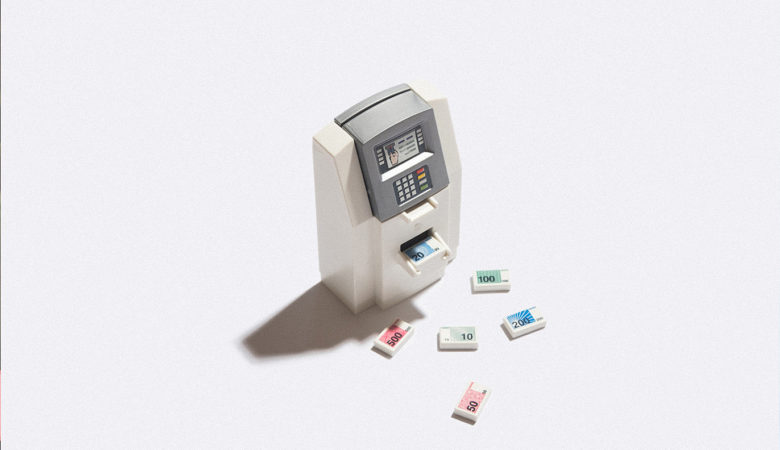Occasionally we’ll link out to relevant products that could be useful to our readers. Learn more about us here.
Registered retirement savings plans (RRSPs) encourage Canadians to save for the future by offering an immediate tax break for contributing to your future nest egg. That contribution money is only taxed when you withdraw it from your RRSP later on (ideally in retirement), giving you decades of tax-free growth on all deposits, earned interest and investment gains.
However, RRSPs aren’t bottomless tax-deferral pits. The government limits how much you can contribute each year across all types of RRSPs, whether it’s an individual, spousal, group or pooled account. It’s important to understand the ins and outs of RRSP contributions to avoid incurring tax penalties that eat away at your savings.
How much can I contribute to an RRSP?
RRSP contribution room is also referred to as your “RRSP deduction limit,” because the amount you deposit can be claimed as a deduction on your annual income tax return.
How much you’re allowed to contribute to an RRSP each year is proportional to your income, up to a maximum dollar amount that changes from year to year. If you don’t max out your RRSP limit, any unused contribution room carries forward to future years.
The maximum amount you can contribute for the year is the lesser of:
- 18% of your earned income from the previous tax year, or
- The annual maximum dollar limit set by the Canada Revenue Agency (CRA). For the 2020 tax year, the maximum is $27,230.
Here are a few basic examples of how much you can contribute you an RRSP based on income:
- If you earn $30,000 per year, you can contribute up to $5,400 annually to an RRSP.
- If you earn $50,000 per year, you can contribute up to $9,000 annually to an RRSP.
- If you earn $80,000 per year, you can contribute up to $14,400 annually to an RRSP.
- If you earn $151,280 or more per year, you can contribute up to the CRA’s annual maximum dollar limit of $27,230 (for 2020).
“Earned income” is all the money you earn from salaries, wages and tips, including self-employment income. It also includes rental income, spousal support, royalties, research grants, and income from unemployment benefit plan payments.
The above examples are based on income only, and don’t account for any carry-forward room from previous years or adjustments made for registered pension plan contributions (more on pensions and RRSPs below).
To find your exact available RRSP contribution room for the current tax year, check your most recent notice of assessment from the CRA. The CRA sends out a notice of assessment every year after it processes your tax return, and it will include the amount of next year’s contribution limit and any unused contribution room.
You can also view information about your RRSP by logging into your CRA My Account, or calling the automated Tax Information Phone Systems (TIPS) line at 1-800-267-6999. Make sure to have your SIN and tax return from the previous year ready, because you’ll need to answer a few questions to verify your identity.
Here’s how the CRA calculates your available RRSP contribution limit:
- 18% of earned income for the previous tax year, up to the annual dollar maximum
- Minus the “pension adjustment” amount, for participants in a registered pension plan (RPP) or deferred profit-sharing plan (DPSP)
- Minus any “past service pension adjustment,” for participants in an RPP or DPSP
- Plus any “past service pension adjustment” reversals
- Plus any unused deduction room carried forward from the previous year
Trade stocks commission-free and get a $10 cash bonus
Open a Wealthsimple Trade account to buy and sell thousands of stocks and ETFs commission-free. You’ll get a $10 cash bonus when you join.
Terms and conditions apply.
How to contribute to an RRSP
There’s no minimum age to open an RRSP. If you have a social insurance number (SIN), earn money from employment and pay taxes, you can easily open an RRSP at a bank, credit union, caisses populaire, trust company, mutual fund company, investment firm or insurance company.
You can contribute to your RRSP over the course of your working life until December 31 of the year in which you turn 71 years old. After that, you have to close your RRSP and either withdraw the cash as a lump-sum payment or convert it into an income-producing annuity or registered retirement income fund (RRIF).
RRSP contribution deadlines don’t follow the traditional January-December calendar year. The deadline for contributing to an RRSP for the previous year is always 60 days after the end of the last year, so usually March 1 or 2 of the current year. The period between January and March is often marketed by the financial services industry as “RRSP season” to encourage last-minute contributions, but you can deposit money into your RRSP at any time during the year.
You can have more than one type of RRSP (individual, spousal, group or pooled), but your annual contribution limit applies across all accounts. For example, you can have two individual RRSPs and contribute to your spouse’s RRSP, but your total personal annual contribution limit stays the same.
Once the money is in your RRSP, it can be used to buy and hold all kinds of investments including stocks, bonds, guaranteed investment certificates (GICs), exchange-traded funds (ETFs), mutual funds, index funds and cash.
Unused RRSP contribution room carries forward
Current RRSP rules date back to 1990, and all contribution room accumulated after that year can be carried forward to future years. Again, if you’re unsure about your current annual contribution limit and any unused carry-forward contribution room, consult your most recent notice of assessment from the CRA. Unused contribution room carries forward indefinitely until you reach age 71 and have to close your RRSP.
Even though you have to report all RRSP contributions on your annual income tax return, you don’t actually have to claim them as deductions in the same year you make the contribution.
Example: You contribute $10,000 to your RRSP in the current tax year. You get a big promotion and raise at work near the end of the year (congrats!), and know you’ll likely be in a higher tax bracket next year. You can carry forward some or all of your $10,000 in RRSP contributions from the current tax year and claim them as deductions on your income tax return the following year. This helps to reduce your tax burden if your new salary bumps you into a higher tax bracket next year.
How much do RRSPs lower your taxes?
RRSP contributions are just one of many deductions that can be claimed on your annual income tax return. The idea behind tax deductions in general, and RRSPs in particular, is to reduce the amount of tax you pay during what’s presumed to be your peak earning years: your 30s, 40s and 50s.
For example, when you deposit $5,000 into an RRSP and claim the entire amount as a deduction, it means your taxable net income will be reduced by $5,000.
The amount of tax savings your RRSP contribution generates is a different story. It depends on your income, tax bracket, how much you contribute and where you live (every province and territory has different taxes). However, you can find out by inputting your annual income and contributions into EY’s 2020 RRSP savings calculator.
Do employer pension plan contributions affect your RRSP limit?
Yes, RRSPs and registered pension plans (RPPs) share contribution room. The main difference between the two is an RRSP is set up by individuals and funded solely by personal contributions, while a pension plan is run by employers.
RRSPs and pension plans provide similar tax-deferred benefits, but are funded by different sources (individual contributions vs. employer contributions). That’s why they share contribution room: to prevent people who have both a workplace pension and an RRSP from double-dipping on tax benefits.
When you and/your employer contribute to your pension plan, it reduces your RRSP contribution room the following year. This amount is called a “pension adjustment,” and can be found on the T4 slip given to you by your employer each year.
What happens if you exceed your RRSP limit?
Make sure to keep track of your RRSP contributions, because you’ll be penalized by the CRA for over contributing. However, there is some wiggle room: you won’t be charged penalties on overcontributions up to $2,000 (a cumulative lifetime total).
If you over-contribute by more than $2,000, you’ll be charged 1% on the excess amount each month the extra money stays in your RRSP.
Example: You accidentally over-contribute to your RRSP by $5,000. It’s your first time going over the limit, so you have the $2,000 wiggle room. However, you’ll be charged a 1% penalty fee as for every month the extra $3,000 sits in your account—that’s $30 per month.
RRSPs have been around in Canada for more than 60 years, and continue to be a pillar of retirement planning. Along with other registered accounts such as the tax-free savings account (TFSA), the RRSP is a way to save for the future while reducing your overall tax burden. Your annual RRSP contribution room can fluctuate based on your income and any unused room that is carried forward, so make sure to track your deposits and check with the CRA if you think you might be close to your limit.











